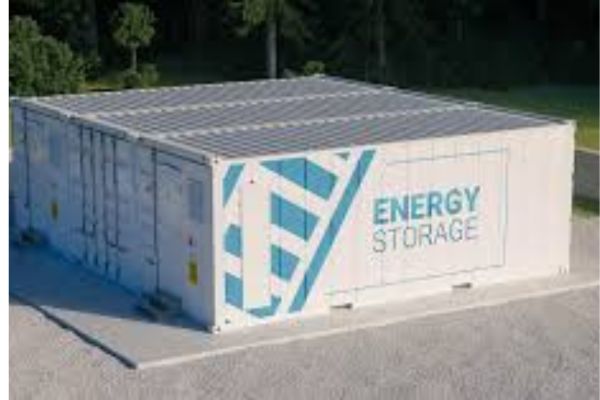The global battery energy storage system (BESS) market size is calculated at USD 39.84 billion in 2025 and is expected to reach around USD 65.27 billion by 2034, growing at a CAGR of 5.68% from 2025 to 2034.
The Battery Energy Storage System (BESS) market is experiencing rapid growth, driven by the rising adoption of renewable energy and the increasing need for efficient energy storage solutions. Factors such as government incentives, technological innovations, and global efforts to reduce carbon emissions are propelling market expansion. With falling battery costs and growing interest from utilities and commercial sectors, the market is projected to continue its strong upward trajectory. Demand is especially expected to rise with the rollout of large-scale grid storage systems and the accelerating adoption of electric vehicles (EVs), both of which are intensifying focus on robust energy storage infrastructure. The transition to clean energy and the need for reliable, flexible grid solutions remain key growth drivers.
Market Scope and Technologies
BESS technology enables the storage of energy for later use, enhancing grid reliability and facilitating the integration of renewable power sources. Core battery technologies in the market include lithium-ion, lead-acid, flow, and sodium-based batteries. These systems are used across residential, commercial, and utility-scale sectors for purposes such as energy management, peak shaving, and backup power. Regional markets—especially North America, Europe, and Asia-Pacific—are expanding, each shaped by unique regulatory frameworks and market dynamics. Ownership models vary as well, encompassing customer-owned, utility-owned, and third-party-operated systems.
2024 BESS Market Highlights
- Asia-Pacific led the global market with a 44.42% revenue share.
- Energy capacity over 500 MWh accounted for 76.8% of the market share.
- Lithium-ion batteries dominated by holding 48% of the market.
- The on-grid segment represented 58% of the connection type share.
- Front-of-the-meter systems captured 80% of the storage system market.
Key Growth Drivers
- Renewable Energy Integration: The increasing use of solar and wind energy is fueling demand for BESS to manage power fluctuations, store surplus energy, and ensure consistent energy supply.
- Advances in Battery Technology: Innovations in lithium-ion chemistry and emerging alternatives like solid-state and flow batteries are improving performance, safety, and scalability—making storage more cost-effective and attractive.
- Supportive Government Policies: Tax credits, subsidies, and other incentives are accelerating adoption by reducing upfront costs and encouraging investment in clean energy infrastructure.
- Grid Modernization Initiatives: As utilities seek to improve reliability and manage demand more efficiently, BESS is being deployed to support peak load management and enhance grid resilience.
- Electrification and Smart Technologies: The growing shift toward electric vehicles and smart energy systems is creating greater demand for flexible and scalable energy storage solutions.
Emerging Trends in the BESS Market
- Renewables Integration: With more renewable energy sources online, energy storage is becoming essential for maintaining grid stability and storing excess generation.
- Policy Support: Governments worldwide are introducing incentives and frameworks that make BESS more viable for both private and public sector adoption.
- Electric Vehicle Growth: The rise in EV adoption is opening new market segments for BESS, including integrated home and public charging solutions.
- Grid-Scale Storage Development: Opportunities are expanding for large-scale projects aimed at enhancing grid flexibility and supporting the shift to sustainable energy systems.
BESS Market Dynamics
BESS Market Drivers
- Rising Demand for Energy Independence and Security: As individuals, businesses, and governments strive to minimize dependence on centralized power grids and enhance energy resilience, the demand for Battery Energy Storage Systems (BESS) continues to rise. BESS enables users to store electricity for use during outages or peak demand periods, promoting a more reliable and self-sufficient energy infrastructure.
- Falling Costs of Battery Technologies: Advancements in battery manufacturing and economies of scale—especially in lithium-ion technologies—have driven down costs significantly. These reductions are making BESS solutions more accessible and economically feasible across residential, commercial, and industrial sectors, fueling broader market adoption.
BESS Market Restraints
- High Upfront Investment: Despite the decreasing cost of batteries, the initial capital required to install BESS remains high. This considerable investment poses a financial barrier, particularly for small businesses, residential users, and regions with constrained funding resources.
- Inadequate Battery Recycling Infrastructure: The current infrastructure for recycling used batteries is insufficient to manage growing volumes effectively. This shortfall presents environmental concerns and increases disposal costs, which can hinder the long-term sustainability and appeal of BESS deployments.
Opportunities
- Integration with Renewable Energy Sources: The increasing push to pair BESS with renewable energy—such as solar and wind—creates significant opportunities. By storing surplus energy generated during peak periods, BESS enhances the reliability, consistency, and efficiency of renewables, supporting the shift toward a decarbonized energy grid.
- Innovation in Battery Technologies: Continued advancements in next-generation batteries, including solid-state and flow batteries, are opening new frontiers. These innovations promise better performance, safety, and lifespan, helping to overcome current limitations and expanding BESS applications from grid stabilization to EV charging support.
Challenges
- Technological Constraints and Performance Variability: BESS technologies still face limitations in terms of energy density, efficiency, and consistency across different battery chemistries. These performance issues can restrict the effectiveness of energy storage solutions, slowing widespread market penetration.
- Regulatory and Policy Uncertainty: The evolving and region-specific nature of regulations governing energy storage can create uncertainty for stakeholders. Inconsistent policies and unclear guidelines around grid integration and storage incentives can delay investments, hinder development, and stall market growth.
Battery Energy Storage System (BESS) Market Segmental Analysis
Technology Overview
Lithium-ion Batteries (48% Market Share in 2024)
Lithium-ion batteries dominate the market due to their high energy density, long life cycle, and low maintenance needs. Widely used across residential, commercial, and utility-scale applications, ongoing innovations in solid-state technology and cost reductions are accelerating adoption and spurring further innovation.
Lead-Acid Batteries (25% Market Share in 2024)
A well-established and cost-effective technology, lead-acid batteries remain relevant in backup power and off-grid scenarios. Recent developments focus on improving deep-cycle performance and hybrid configurations, though competition from more efficient technologies is intensifying.
Flow Batteries (16% Market Share in 2024)
Flow batteries, known for their scalability and long operational life, are ideal for grid-scale applications. Current market trends emphasize efficiency improvements and cost reduction, positioning flow batteries as a key player in renewable energy integration.
Sodium-Based Batteries (11% Market Share in 2024)
Sodium-based batteries—including sodium-sulfur and sodium-ion—are gaining attention as a cost-efficient alternative to lithium-ion. Their ability to operate at high temperatures and utilize more abundant materials makes them attractive for grid applications. Research continues to enhance their performance and safety profiles.
Other Technologies
This segment includes emerging battery types such as solid-state, zinc-air, and nickel-based systems. These alternatives aim to overcome safety, cost, and performance limitations of traditional batteries. Extensive R&D efforts are ongoing to bring these technologies to market readiness.
Storage System Type
Front-of-the-Meter (FTM) – 80% Market Share in 2024
FTM systems are utility-scale installations designed for grid-level operations like stabilization, load shifting, and renewable integration. Growth in this segment is propelled by investments in energy infrastructure, regulatory incentives, and technological advances in high-capacity battery systems.
Behind-the-Meter (BTM) – 20% Market Share in 2024
BTM systems are installed on-site for residential and commercial users, providing backup power and energy cost savings. The segment is expanding due to growing consumer interest in energy autonomy, financial incentives, and advancements in affordable battery technology.
Connection Type
On-Grid – 58% Market Share in 2024
On-grid BESS are integrated with the main power grid to support energy reliability and renewable integration. As renewable energy projects grow, so does the demand for on-grid systems, which offer critical load-balancing and grid stability services.
Off-Grid – 42% Market Share in 2024
Off-grid systems operate independently of the centralized grid, serving remote or rural areas. Increasing investments in sustainable development and enhanced battery technologies are driving growth in off-grid solutions, particularly where grid expansion is not feasible.
Ownership Models
Customer-Owned Systems
These systems are managed by homeowners or businesses, often paired with solar PV. Growing awareness of energy savings, coupled with declining battery costs and available incentives, is boosting adoption.
Third-Party Owned Systems
Under this model, energy service companies install and maintain BESS at customer sites, often under power purchase or performance contracts. The appeal lies in minimal upfront costs and expert system management, making storage accessible to more users.
Utility-Owned Systems
Utilities deploy large-scale BESS for grid support, peak demand management, and renewable integration. This segment is rapidly expanding as part of utility strategies to modernize energy infrastructure and meet renewable energy mandates.
By Energy Capacity
Below 100 MWh – 4.5% Market Share in 2024
Used for residential and small commercial needs, these systems offer short-duration energy backup and load management. Growth is supported by increased adoption of solar-plus-storage systems and affordable, compact battery options.
100 to 500 MWh – 18.7% Market Share in 2024
These mid-scale systems serve commercial, industrial, and some utility applications. They are key to grid balancing and renewable energy support, with strong momentum from grid investment and sustainability initiatives.
Above 500 MWh – 76.8% Market Share in 2024
Dominating the market, high-capacity systems are central to utility-scale applications. They play a crucial role in grid management, renewable integration, and energy reliability. Falling costs and supportive policies are fueling this segment’s expansion.
Application Areas
Residential
Home battery systems store solar or grid electricity for use during outages or peak demand. Increasing consumer focus on sustainability, energy independence, and cost savings is driving this segment’s growth.
Commercial
Commercial BESS enable peak shaving, load shifting, and operational continuity. Businesses are leveraging these systems for cost optimization and ESG (Environmental, Social, Governance) goals, with expanding adoption across various sectors.
Utility
Utility-scale BESS support grid reliability, renewable energy integration, and large-scale energy dispatch. This segment is seeing rapid growth, backed by policy mandates, renewable energy targets, and grid modernization efforts.
BESS Market Regional Insights
North America
- 2024 Market Size: USD 7.45 billion
- 2034 Forecast: USD 12.94 billion
Robust growth in North America is fueled by expanding renewable energy investments, federal and state-level incentives, and favorable regulatory frameworks. BESS is integral to grid modernization and emission reduction efforts across the U.S. and Canada.
Europe
- 2024 Market Size: USD 10.76 billion
- 2034 Forecast: USD 18.69 billion
Europe is leading the energy transition, driven by strong climate policies and the EU Green Deal. Supportive regulations, subsidies, and high-profile pilot projects are accelerating BESS adoption for grid stability and renewable energy integration.
Asia-Pacific
- 2024 Market Size: USD 16.68 billion
- 2034 Forecast: USD 28.99 billion
The region dominates the global BESS market due to rapid industrialization, large-scale renewable initiatives, and aggressive infrastructure development in countries like China and India. Government backing and tech advancements further support this momentum.
LAMEA (Latin America, Middle East & Africa)
- 2024 Market Share: 7.11%
Emerging demand in LAMEA is driven by efforts to improve energy access and integrate renewables. While growth is uneven across the region, investments in infrastructure and declining battery prices are laying the groundwork for future expansion.
Get more details@ https://www.cervicornconsulting.com/sample/2313














